#aqua claudia aqueduct
Text
Palatine Hill: The Birthplace of Rome
The story of Rome begins like this, with two little baby boys, Romulus and Remus. Left in the woods to be raised by the lupa (she-wolf) in a nearby cave, the twins would grow up to be shepherds. They eventually ventured out, seeking to start their own city, but when the boys could not agree where to build their settlement, they had an argument ending in Romulus killing his brother Remus. …
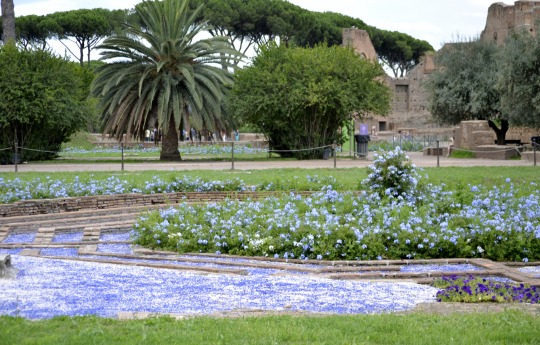
View On WordPress
#Africa#Aqua Claudia#Asia#aviary#Botanical Gardens#Caesar Augustus#chariot races#Circus Agonalis#circus maximus#cisterns#civil engineering#Colosseum#Domitian#Domitian&039;s Aqua Claudia#Domitian&039;s Aqueduct#Domitian&039;s Hippodrome#Domus Augustana#domus augustina#Domus Flavia#emperor#Emperor Domitian#emperors#Europe#Farnese family#Flavian Amphitheater#Flavian dynasty#Flavian Palace#foot races#fountain#grand palace
0 notes
Text

Roman Coin - Gold Aureus of Caligula
C. AD 37-38
Obverse: portrait of Caligula. Reverse : Portrait of Caligula's mother Agrippina. Unlike his predecessors, Caligula lacked military experience. His coinage placed heavy emphasis or his family instead.
Gaius Caesar Augustus Germanicus (31 August 12 – 24 January 41), better known by his nickname Caligula, was the third Roman emperor, ruling from AD 37 until his assassination in AD 41. He was the son of the Roman general Germanicus and Agrippina the Elder, Augustus' granddaughter. Caligula was born into the first ruling family of the Roman Empire, conventionally known as the Julio-Claudian dynasty.
Although Gaius was named after Gaius Julius Caesar, he acquired the nickname "Caligula" ('little boot'), the diminutive form of caligae, a military boot, from his father's soldiers during their campaign in Germania. When Germanicus died at Antioch in 19, Agrippina returned with her six children to Rome, where she became entangled in a bitter feud with Tiberius, Germanicus' uncle. The conflict eventually led to the destruction of her family, with Caligula as the sole male survivor. In 26, Tiberius withdrew from public life to the island of Capri, and in 31, Caligula joined him there. Following the former's death in 37, Caligula succeeded him as emperor. There are few surviving sources about the reign of Caligula, though he is described as a noble and moderate emperor during the first six months of his rule. After this, the sources focus upon his cruelty, sadism, extravagance, and sexual perversion, presenting him as an insane tyrant.
While the reliability of these sources is questionable, it is known that during his brief reign, Caligula worked to increase the unconstrained personal power of the emperor, as opposed to countervailing powers within the principate. He directed much of his attention to ambitious construction projects and luxurious dwellings for himself, and he initiated the construction of two aqueducts in Rome: the Aqua Claudia and the Anio Novus. During his reign, the empire annexed the client kingdom of Mauretania as a province. In early 41, Caligula was assassinated as a result of a conspiracy by officers of the Praetorian Guard, senators, and courtiers. However, the conspirators' attempt to use the opportunity to restore the Roman Republic was thwarted. On the day of the assassination of Caligula, the Praetorians declared Caligula's uncle, Claudius, the next emperor. Caligula's death marked the official end of the Julii Caesares in the male line, though the Julio-Claudian dynasty continued to rule until the demise of his nephew, Nero.
#Emperor Caligula#Roman Coin - Gold Aureus of Caligula#gold#gold coin#roman coin#collectable coin#ancient artifacts#archeology#archeolgst#history#history news#ancient history#ancient culture#ancient civilizations#ancient rome#roman history#roman empire#roman art
36 notes
·
View notes
Text

The Porta Maggiore, Rome, Incorporating Part of the Claudian Aqueduct (Aqua Claudia) by John Heaviside Clark & Matthew Dubourg (1820)
78 notes
·
View notes
Text
Ancient Rome
Aqueducts: The Romans designed and constructed an extensive network of aqueducts, which were elevated channels and bridges that transported fresh water from distant sources to urban centers. The aqueducts were typically constructed using a combination of arches and underground conduits to ensure a consistent water supply.
Long-Distance Water Transport: Some of the most famous aqueducts included the Aqua Claudia and the Aqua Appia. These structures transported water from sources often located miles away from the cities, providing a reliable and clean water supply to meet the needs of the growing Roman population.
Public Baths and Fountains: The abundance of water made it possible for the Romans to build public baths, fountains, and ornate gardens throughout their cities. This not only facilitated personal hygiene but also promoted a sense of well-being and leisure.
Plumbing Systems: Romans were pioneers in the use of lead and bronze pipes for plumbing. They installed plumbing systems within buildings to distribute water for drinking, washing, and waste removal. Their understanding of hydraulic engineering allowed for effective water distribution and waste disposal.
Marcus Vitruvius Pollio: Vitruvius, a Roman architect and engineer, is known for his work "De architectura" (On Architecture). In this influential treatise, he discussed principles of architecture and engineering, including hydraulics. His writings provided valuable insights into the design and construction of aqueducts and plumbing systems.
Sanitation and Sewage: In addition to freshwater supply, the Romans were also concerned with sewage disposal. They built a complex system of underground sewage channels and public toilets (latrines) to maintain sanitation in their cities.
Urban Planning: The integration of water supply and sanitation into Roman urban planning was a testament to their advanced civil engineering. This not only improved the quality of life for residents but also contributed to the growth and prosperity of Roman cities.

0 notes
Text
Modern History Project
Roman Aqueducts
Roman aqueducts were an outstanding example of the engineering and architecture of ancient Rome. These structures were built to transport water from external sources to the cities and towns of the Roman Empire. Aqueducts supplied water to different places, such as baths, fountains, private homes, mining operations, water mills, farms and gardens.

Before the development of aqueduct technology, Romans relied on local springs, aquifers, and groundwater from private or public wells, as well as collecting rainwater in cisterns. However, this dependency limited the potential growth of the communities.
The first aqueduct in Rome was built in 312 BC. C. and supplied water to a fountain in the city's livestock market. In the 3rd century, the city had 11 aqueducts, supporting a population of more than a million inhabitants with an extravagant economy; most of the water was supplied to the city's many public baths. Cities and towns throughout the Roman Empire emulated this model and financed aqueducts as objects of public interest and civic pride.

The Roman aqueducts were notable for their imposing size and their message of dominance over nature. In addition to their practical function, they were also symbols of Rome's power and advanced civilization. The Romans considered public works, such as aqueducts, as a priority and used them as propaganda vehicles to show the power of the emperor and the empire. Some of the most famous aqueducts in Rome include: The Aqua Claudia, the Aqua Julia, the Aqua Virgo and the Aqua Marcia. These structures were built with arches and columns to maintain a continuous gradient and allow water to flow by gravity through conduits built of stone or brick.

The fall of the Roman Empire marked the decline of the aqueducts. Some aqueducts were deliberately broken by enemies, while others fell into disrepair due to a lack of maintenance. As central authority deteriorated in the 4th and 5th centuries, the aqueduct systems also deteriorated, and people returned to obtaining water from wells and local rivers.
In conclusion, the Roman aqueducts were a vital part of ancient Roman society, showcasing the Romans' prowess in civil engineering and their ability to push the boundaries of physics and architecture. Today, the Roman aqueducts are considered major engineering achievements and continue to be admired for their architectural and technological advancements.

0 notes
Text
Roman Empire
The Roman Empire was known for its advanced engineering and its ability to build aqueduct systems that supplied water to the cities and regions they conquered.
These aqueducts were developed to supply water for domestic, agricultural and public uses.
Aqueduct of Rome (Aqua Appia): The Aqua Appia was one of the first Roman aqueducts, built in 312 BC during the Roman Republic. It was approximately 16 kilometers long and carried fresh water from subway sources to the city of Rome.
Aqueduct of Segovia (Anio Novus): Its construction took place in the first century AD with the purpose of transporting water from the nearby mountains to the city of Segovia, located in what we know today as Spain. This impressive aqueduct is characterized by its stone arches and reaches an impressive height of over 28 meters at its highest point.
Pont du Gard Aqueduct: This aqueduct is located in present-day France and dates from the 1st century A.D. It was part of the water supply system of the city of Nîmes. The Pont du Gard, with three levels of arches, is one of the best preserved examples of Roman engineering.
Istanbul Aqueduct (Aqua Claudia): Built in the 1st century AD, this aqueduct carried water to the ancient city of Byzantium (which later became Constantinople and eventually Istanbul). Part of its structure can still be seen in present-day Istanbul, Turkey.
Aqueduct of Arles (Aqua Julia): This aqueduct system in Arles, France, was built in the 1st century AD and supplied water to the Roman city of Arelate (Arles). Its construction included an aqueduct bridge called "Pont de Roquefavour" which is still in use today.
Lisbon Aqueduct (Águas Livres): The Águas Livres aqueduct system in Lisbon, Portugal, was built in the 18th century, but follows the Roman tradition of aqueducts.
This aqueduct system provided water to the city of Lisbon for centuries and is still considered a major architectural achievement.the aqueducts of the Roman Empire left a lasting legacy in terms of engineering, water supply, sustainability and architecture.

1 note
·
View note
Photo
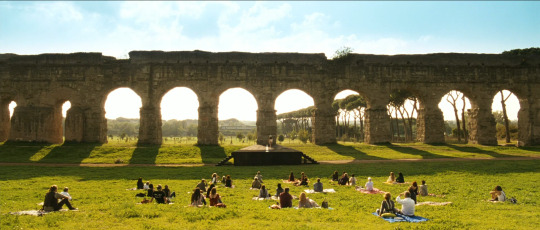
La grande bellezza (Paolo Sorrentino, 2013)
Aqua Claudia Aqueduct
Rome (Italy)
Type: aqueduct, arch bridge.
#la grande bellezza#the great beauty#paolo sorrentino#2013#aqua claudia#aqua claudia aqueduct#rome#Italy#aqueduct#arch bridge#bridge
12 notes
·
View notes
Text

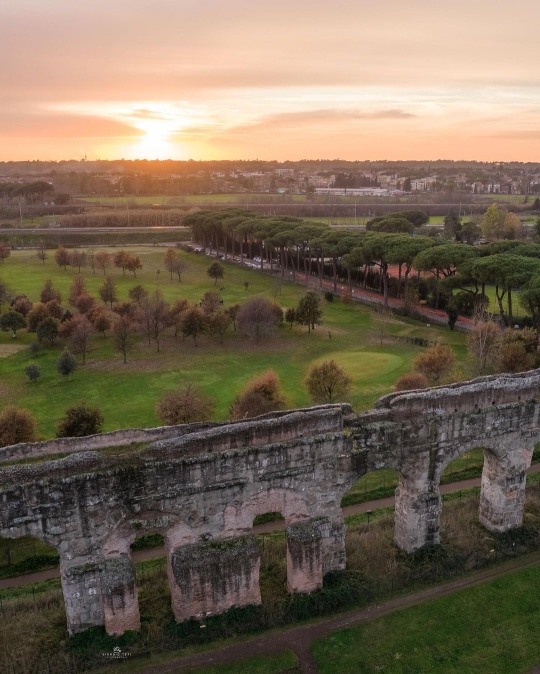

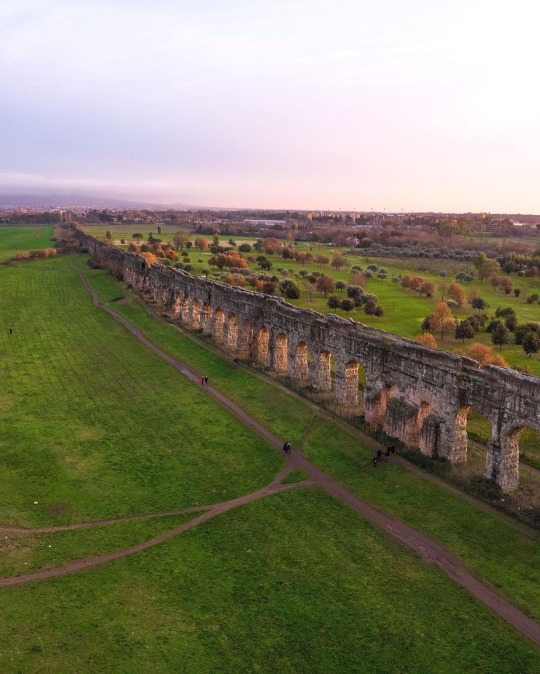

Aqua Claudia aqueduct started by Caligula in 38 AD. and completed by Claudius in 52 AD, it brought water to the city of Rome from the Subiaco River, some 68 km from Rome.
404 notes
·
View notes
Photo

The Aqueduct of Nero Leading to the Palatine; a Branch of the Aqua Claudia, Giovanni Battista Piranesi, 1775, Minneapolis Institute of Art: Prints and Drawings
48; black and white Emperor Nero (37–68) appears to have ordered the construction of this mile-and-a-quarter stretch of aqueduct (an elevated waterway) to serve Rome’s Palatine Hill after a devastating fire in the year 64 CE. Piranesi’s diagonal composition dramatizes the structure’s imposing scale. His inscription tells us that Pope Clement XIV (r. 1769–74) rescued the ancient aqueduct’s remains when others wanted to raze them. Clement shared Piranesi’s love of Rome’s proud past and worked to save monuments and smaller works of art.
Size: 19 1/4 x 27 3/4 in. (48.9 x 70.49 cm) (plate)
Medium: Etching
https://collections.artsmia.org/art/77280/
4 notes
·
View notes
Photo


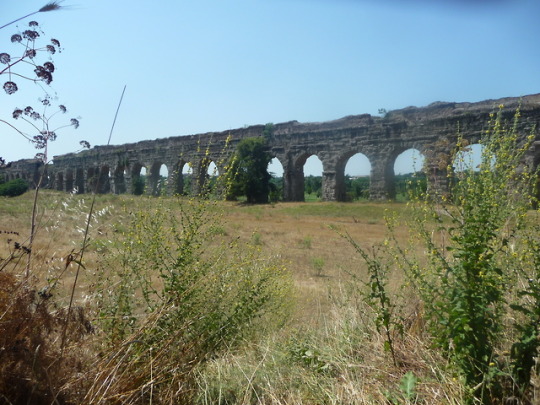
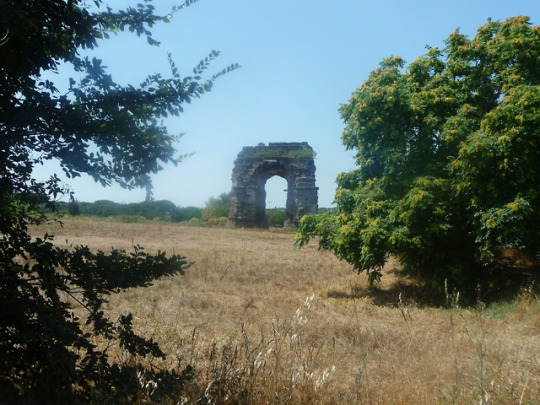



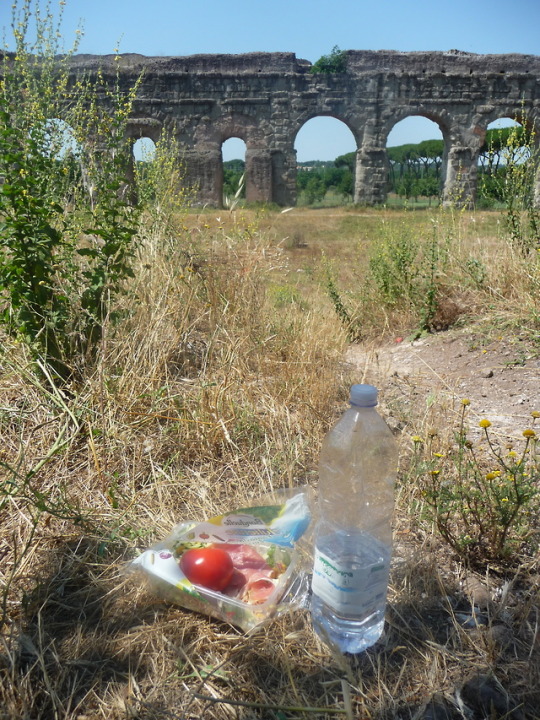
Aqueduct park of Rome - how to get there
This place is one of my favourites in Rome and actually not that difficult to reach. A few years ago there was an excellent web page with instructions how to go there but unfortunately it has gone now. So I decided to make a crude version of my own.
1.Take a metro to Giulio Agricola station
2. Walk towards southwest along Viale Giulio Agricola. it’s possible that you have to cross a bigger street - Via Tuscolana - before you can do this. For example I had to do this and hence added the location of metro entrance/exit into the map above.
3. After circa 0,5 kilometer walk you willl see the church of Parrochia San Policarpo in front of you. It’s a bit like a byzantine church and impossible to miss. From there turn to the left and walk along Via Lemonia. After a couple of hundred meters walk you’ll see the entrance to the park on the right,
4. After entering the park turn to left and follow the road “Viale Appio Claudio” (map 2). You will reach Aqua Claudia after a 5-10 minutes walk or so.
5. And finally one thing, if you go there during summer, it’s going to be hot ...and I mean hot. So I strongly advice that you fill a couple of water bottles when leaving your hotel and buy some fruits and other refreshments before entering the park. I have marked the location of nearby supermarkets in maps above. Didn’t visit Conad but the supermarket on Viale Giulio Agricola was ok. And if you get really thirsty there was a tiny park with children’s play ground between Aqueduct park entrance and San Policarpo. At least four years ago there was a water post in this park and they don’t usually remove them. As for the aqueduct park i didn’s see any big noses there.
171 notes
·
View notes
Text
Things To See Around The Catacombs
When people think of Rome, they frequently think of "food, the Colosseum, and the Vatican." It's a realistic portrayal, but there are no boundaries to what you can see and do in the city, which is why the Roman Catacombs should be at the top of your list! What's more, when you've completed your tour of the area? Things to see in the area...
Domitilla Catacombs
The underground Catacombs of Domitilla are located about 15 minutes outside of Rome. The Domitilla Catacombs were built because it was illegal to bury people inside Rome, but the Paris Catacombs were built because there was no more place to bury people in the city.
Not a fan of bones and death? Many beautiful frescoes, going back to 360 A.D., may be seen in the Catacombs of Domitilla, yet there are no skeletal remains to be found. In the catacombs, an estimated 150,000 people are interred.
The Basilica Of The Martyrs Nereus & Achilleus
The subterranean Basilica is one of the primary attractions of these catacombs. It's exactly what it sounds like: a vast underground Basilica where Christians formerly worshiped.
When the Basilica was built around the end of the fourth century AD, Christianity had already become lawful. It wasn't to conceal, but to be closer to the tombs, therefore they went underground.
Christian Tombs
Tufa stone, a kind of volcanic stone, was used to dig the tombs or graves. Because they were dug first, the oldest tombs are the ones closest to the surface. You'll note that the tombs are much smaller than you would expect. Because the Romans were small, and humans have gotten taller over time, this is the case.
Ancient Fresco Of Paleo-Christian Origin
Because the catacombs were underground, they had a significant preservation advantage. Many of the graves were formerly sealed shut to keep grave thieves out. That indicates there is essentially no air or element circulation. Murals were frequently used to adorn tombs, and many of them are among the best-preserved frescoes from antiquity.
Many of the paintings depict grain delivery to Ostia, which is likely the profession of individuals buried there. There's also a mural showing The Last Supper from the second century.
Via Appia Antica
The Appian Way, also known as Via Appia Antica, is one of Rome's original seven roadways. The route connected Rome to Brindisi, a seaside town in southern Italy with a port that connected Rome to the Middle East.
Appius Claudius Caecus built the first road in 312 BC and named it after himself. During the Samnite Wars, the route was constructed and used. It was a long and winding route that spanned over 350 kilometers.
Capuchin Crypt In Rome
If you're looking for bones, go to the Capuchin Crypts in Rome's old center. The Capuchin Crypt, which dates from 1645, is not strictly a catacomb. It does, however, fit nicely with the eerie ambiance of the Roman tombs.
Why should you come here? This location is the ultimate resting place of over 4,000 monks who were buried between 1500 and 1870. These apartments are more than a little creepy since they are adorned with the bones of these old monks.
Park Of The Aqueducts
The Park of the Aqueducts, or Parco Degli Aquedotti in Italian, is the largest green area in Rome and is part of the Appian Way Park. It's a wonderfully tranquil area that's a little difficult to find, but well worth the effort.
It is exactly what you believe it to be. A park containing aqueducts dating back to the Roman era. Aqua Felix and Aqua Claudia are clearly seen. The Claudian Aqueduct, also known as Aqua Claudia, extends 43 kilometers and climbs up to 100 feet in the air.
0 notes
Text
The Colosseum
The exterior of the Colosseum, showing the partially intact outer wall (left) and the mostly intact inner wall (right)
The Colosseum, or the Coliseum, originally the Amphitheatrum Flavium (English: Flavian Amphitheatre, Italian: Anfiteatro Flavio or Colosseo), the largest amphitheatre in the world,[1] is an elliptical amphitheatre in the centre of the city of Rome, Italy, the largest ever built in the Roman Empire, built of concrete and stone.[2] It is considered one of the greatest works of Roman architecture and Roman engineering.
Occupying a site just east of the Roman Forum, its construction started in 70 AD[3] under the emperor Vespasian and was completed in 80 AD under Titus,[4] with further modifications being made during Domitian's reign (81–96).[5] The name "Amphitheatrum Flavium" derives from both Vespasian's and Titus's family name (Flavius, from the gens Flavia).
Capable of seating 50,000 spectators,[6][7] the Colosseum was used for gladiatorial contests and public spectacles such as mock sea battles, animal hunts, executions, re-enactments of famous battles, and dramas based on Classical mythology. The building ceased to be used for entertainment in the early medieval era. It was later reused for such purposes as housing, workshops, quarters for a religious order, a fortress, a quarry, and a Christian shrine.
Although in the 21st century it stays partially ruined because of damage caused by devastating earthquakes and stone-robbers, the Colosseum is an iconic symbol of Imperial Rome. It is one of Rome's most popular tourist attractions and still has close connections with the Roman Catholic Church, as each Good Friday the Pope leads a torchlit "Way of the Cross" procession that starts in the area around the Colosseum.[8]
The Colosseum is also depicted on the Italian version of the five-cent euro coin.History
Ancient
Construction of the Colosseum began under the rule of the Emperor Vespasian[5] in around 70–72 AD, funded by the spoils taken from the Jewish Temple after the Siege of Jerusalem.[15] The site chosen was a flat area on the floor of a low valley between the Caelian, Esquiline and Palatine Hills, through which a canalised stream ran. By the 2nd century BC the area was densely inhabited. It was devastated by the Great Fire of Rome in AD 64, following which Nero seized much of the area to add to his personal domain. He built the grandiose Domus Aurea on the site, in front of which he created an artificial lake surrounded by pavilions, gardens and porticoes. The existing Aqua Claudia aqueduct was extended to supply water to the area and the gigantic bronze Colossus of Nero was set up nearby at the entrance to the Domus Aurea.[14]
Although the Colossus was preserved, much of the Domus Aurea was torn down. The lake was filled in and the land reused as the location for the new Flavian Amphitheatre. Gladiatorial schools and other support buildings were constructed nearby within the former grounds of the Domus Aurea. According to a reconstructed inscription found on the site, "the emperor Vespasian ordered this new amphitheatre to be erected from his general's share of the booty." This is thought to refer to the vast quantity of treasure seized by the Romans following their victory in the Great Jewish Revolt in 70 AD. The Colosseum can be thus interpreted as a great triumphal monument built in the Roman tradition of celebrating great victories,[14] placating the Roman people instead of returning soldiers. Vespasian's decision to build the Colosseum on the site of Nero's lake can also be seen as a populist gesture of returning to the people an area of the city which Nero had appropriated for his own use. In contrast to many other amphitheatres, which were located on the outskirts of a city, the Colosseum was constructed in the city centre; in effect, placing it both literally and symbolically at the heart of Rome.
The Colosseum had been completed up to the third story by the time of Vespasian's death in 79. The top level was finished and the building inaugurated by his son, Titus, in 80.[5] Dio Cassius recounts that over 9,000 wild animals were killed during the inaugural games of the amphitheatre. The building was remodelled further under Vespasian's younger son, the newly designated Emperor Domitian, who constructed the hypogeum, a series of underground tunnels used to house animals and slaves. He also added a gallery to the top of the Colosseum to increase its seating capacity.
In 217, the Colosseum was badly damaged by a major fire (caused by lightning, according to Dio Cassius[16]) which destroyed the wooden upper levels of the amphitheatre's interior. It was not fully repaired until about 240 and underwent further repairs in 250 or 252 and again in 320. An inscription records the restoration of various parts of the Colosseum under Theodosius II and Valentinian III (reigned 425–455), possibly to repair damage caused by a major earthquake in 443; more work followed in 484[17] and 508. The arena continued to be used for contests well into the 6th century, with gladiatorial fights last mentioned around 435. Animal hunts continued until at least 523, when Anicius Maximus celebrated his consulship with some venationes, criticised by King Theodoric the Great for their high cost.[14]
1 note
·
View note
Text
The Solitary Soldier
Marching to one's own drumbeat; Unpopular opinions can cost you friends.
For instance if one says things about religious persuasions or political candidates or their tactics, then it doesn't matter that the observances are clear as day and based on reason, they will be seen as emotional outbursts based on passion. This will cause a rift ... even among family members. Such a pity.
With this possibility in mind, I feel that I must air a point of view that may cause discomfiture. The title of my opinion is:
WHO IS THE CALIGULA of 21st CENTURY UNITED STATES?
A movie with Peter O'Toole focused on The rise and fall of the notorious Roman Emperor Caligula, showing the violent methods that he employs to gain the throne, and the subsequent insanity of his reign. For instance - he gives his horse a political office and humiliates and executes anyone who even slightly displeases him. He also sleeps with his sister, organises elaborate orgies and embarks on a fruitless invasion of Britain before finally meeting an appropriate end - assassination.
Caligula was born Gaius Julius Caesar Augustus Germanicus;
He lived from 31 August AD 12 – to 24 January AD 41 and was Roman emperor from AD 37 to AD 41. The son of Germanicus, a popular Roman general, and Agrippina the Elder, herself the granddaughter of Augustus Caesar, Caligula was born into the first ruling family of the Roman Empire, conventionally known as the Julio-Claudian dynasty. Rich boy!
Two years after Caligula's birth his granduncle (actually his adoptive grandfather), Tiberius, succeeded Augustus as emperor of Rome in AD 14.
Although he was born Gaius Caesar, named in honor of his forbear Julius Caesar, he acquired the nickname "Caligula" (meaning "little soldier's boot", the diminutive form of caliga) from his father's soldiers during their campaign in Germania.
You might remember the movie Gladiator, which fictionalised this period.
When Germanicus died at Antioch in AD 19, mother Agrippina returned with her six children to Rome, where she became entangled in a bitter feud with Tiberius. The conflict eventually led to the destruction of her family, with Caligula as the sole male survivor.
Untouched by the deadly intrigues, Caligula accepted an invitation in AD 31 to join the emperor Tiberius on the island of Capri, where he had withdrawn five years previously. Following the death of Tiberius, Caligula succeeded his adoptive grandfather as emperor in AD 37.
There are few surviving sources about the reign of Caligula, although he is described as a noble and moderate emperor during the first six months of his rule. After this, however, the sources focus upon his cruelty, sadism, extravagance, and sexual perversion, presenting him as an insane tyrant. It is known that during his brief reign, Caligula worked to increase the unconstrained personal power of the emperor, as opposed to countervailing powers within the principate. He directed much of his attention to ambitious construction projects and luxurious dwellings for himself, and initiated the construction of two aqueducts in Rome: the Aqua Claudia and the Anio Novus.
In early AD 41, Caligula was assassinated as a result of a conspiracy by officers of the Praetorian Guard, senators, and courtiers. The conspirators' attempt to use the opportunity to restore the Roman Republic was thwarted, however, and on the day of the assassination of Caligula, the Praetorians declared Caligula's uncle, Claudius, to be the next Roman emperor.
CroZdale Post
March 14, 2018
Unpopular opinions can cost you friends.
For instance if one says things about religious persuasions or political candidates or their tactics, then it doesn't matter that the observances are clear as day and based on reason, they will be seen as emotional outbursts based on passion. This will cause a rift ... even among family members. Such a pity.
With this possibility in mind, I feel that I must air a point of view that may cause discomfiture. The title of my opinion is:
WHO IS THE CALIGULA of 21st CENTURY UNITED STATES?
A movie with Peter O'Toole focused on The rise and fall of the notorious Roman Emperor Caligula, showing the violent methods that he employs to gain the throne, and the subsequent insanity of his reign. For instance - he gives his horse a political office and humiliates and executes anyone who even slightly displeases him. He also sleeps with his sister, organises elaborate orgies and embarks on a fruitless invasion of Britain before finally meeting an appropriate end - assassination.
Caligula was born Gaius Julius Caesar Augustus Germanicus;
He lived from 31 August AD 12 – to 24 January AD 41 and was Roman emperor from AD 37 to AD 41. The son of Germanicus, a popular Roman general, and Agrippina the Elder, herself the granddaughter of Augustus Caesar, Caligula was born into the first ruling family of the Roman Empire, conventionally known as the Julio-Claudian dynasty. Rich boy!
Two years after Caligula's birth his granduncle (actually his adoptive grandfather), Tiberius, succeeded Augustus as emperor of Rome in AD 14.
Although he was born Gaius Caesar, named in honor of his forbear Julius Caesar, he acquired the nickname "Caligula" (meaning "little soldier's boot", the diminutive form of caliga) from his father's soldiers during their campaign in Germania.
You might remember the movie Gladiator, which fictionalised this period.
When Germanicus died at Antioch in AD 19, mother Agrippina returned with her six children to Rome, where she became entangled in a bitter feud with Tiberius. The conflict eventually led to the destruction of her family, with Caligula as the sole male survivor.
Untouched by the deadly intrigues, Caligula accepted an invitation in AD 31 to join the emperor Tiberius on the island of Capri, where he had withdrawn five years previously. Following the death of Tiberius, Caligula succeeded his adoptive grandfather as emperor in AD 37.
There are few surviving sources about the reign of Caligula, although he is described as a noble and moderate emperor during the first six months of his rule. After this, however, the sources focus upon his cruelty, sadism, extravagance, and sexual perversion, presenting him as an insane tyrant. It is known that during his brief reign, Caligula worked to increase the unconstrained personal power of the emperor, as opposed to countervailing powers within the principate. He directed much of his attention to ambitious construction projects and luxurious dwellings for himself, and initiated the construction of two aqueducts in Rome: the Aqua Claudia and the Anio Novus.
In early AD 41, Caligula was assassinated as a result of a conspiracy by officers of the Praetorian Guard, senators, and courtiers. The conspirators' attempt to use the opportunity to restore the Roman Republic was thwarted, however, and on the day of the assassination of Caligula, the Praetorians declared Caligula's uncle, Claudius, to be the next Roman emperor.

0 notes
Photo

Aqua Claudia || Rome, Italy
The aqueduct that supplied the city of Rome with clean drinking water takes its name from Emperor Claudius, under whose reign it was finished in 52 AD. Its construction was begun my Claudius’ predecessor, Emperor Caligula, in 38 AD.
#rome#aqueduct#italy#ancient rome#travel#places#roma#italia#mine#photography#roman empire#Architecture
2 notes
·
View notes
Photo

Arrivals & Departures - 31 August 12
Celebrate Gaius Julius Caesar Augustus Germanicus Caligula Day!
Caligula (/kəˈlɪɡjʊlə/; Latin: Gaius Julius Caesar Augustus Germanicus; 31 August 12 – 24 January 41 AD) was Roman emperor from 37 to 41 AD. The son of the popular Roman general Germanicus and Augustus's granddaughter Agrippina the Elder, Caligula was born into the first ruling family of the Roman Empire, conventionally known as the Julio-Claudian dynasty. Germanicus's uncle and adoptive father, Tiberius, succeeded Augustus as emperor of Rome in 14.
Although he was born Gaius Caesar, after Julius Caesar, he acquired the nickname "Caligula" (meaning "little [soldier's] boot", the diminutive form of caliga) from his father's soldiers during their campaign in Germania. When Germanicus died at Antioch in 19, Agrippina returned with her six children to Rome, where she became entangled in a bitter feud with Tiberius. The conflict eventually led to the destruction of her family, with Caligula as the sole male survivor. Untouched by the deadly intrigues, Caligula accepted an invitation in 31 to join the emperor on the island of Capri, where Tiberius had withdrawn five years earlier. Following the death of Tiberius, Caligula succeeded his adoptive grandfather as emperor in 37.
There are few surviving sources about the reign of Caligula, although he is described as a noble and moderate emperor during the first six months of his rule. After this, the sources focus upon his cruelty, sadism, extravagance, and sexual perversion, presenting him as an insane tyrant. While the reliability of these sources is questionable, it is known that during his brief reign, Caligula worked to increase the unconstrained personal power of the emperor, as opposed to countervailing powers within the principate. He directed much of his attention to ambitious construction projects and luxurious dwellings for himself, and initiated the construction of two aqueducts in Rome: the Aqua Claudia and the Anio Novus. During his reign, the empire annexed the client kingdom of Mauretania as a province.
In early 41, Caligula was assassinated as a result of a conspiracy by officers of the Praetorian Guard, senators, and courtiers. The conspirators' attempt to use the opportunity to restore the Roman Republic was thwarted, however. On the day of the assassination of Caligula, the Praetorians declared Caligula's uncle, Claudius, the next Roman emperor. Although the Julio-Claudian dynasty continued to rule the empire until the fall of his nephew Nero in 68, Caligula's death marked the official end of the Julii Caesares in the male line.
0 notes
Text
Well, the Ancient Romans did that!
Well, the Ancient Romans did that!
This post is by Nancy Jardine.
What Did The Ancient Romans Ever Do For Us? That phrase might bring to mind many different scenarios. For me growing up watching UK television in the 1960s and 1970s, the first image would be of an irreverently funny show called Monty Python’s Flying Circus. The weekly show had many spin offs, one of which was a definitely flippant feature film. In the film a…
View On WordPress
#FLVirtualRome#Ancient Roman Architecture#Aqua Claudia#Nancy Jardine#Roman aqueducts#Rome#Trevi Fountain
0 notes